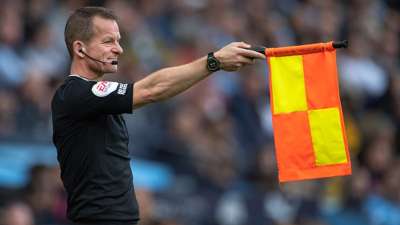FIFA World Cup 2022: What is offside rule and how it works? - Explained
-
 Image Source : Getty
Image Source : GettyFIFA World Cup 2022: What is offside rule and how it works? - Explained
-
Image Source : Getty
The law states that a player is in an offside position if any of their body parts, except the hands and arms, are in the opponents' half of the pitch, and closer to the opponents' goal line than both the ball and the second-last opponent (the last opponent is usually, but not necessarily, the goalkeeper)
-
Image Source : Twitter
Being in an offside position is not an offence in itself, but a player so positioned when the ball is played by a teammate can be judged guilty of an offside offence if they receive the ball or will otherwise become "involved in active play", will "interfere with an opponent", or will "gain an advantage" by being in that position.
-
Image Source : Getty
Offside is judged at the moment the ball is last touched by the most recent teammate to touch the ball. Being in an offside position is not an offence in itself. A player who was in an offside position at the moment the ball was last touched or played by a teammate must then become involved in active play, in the opinion of the referee, in order for an offence to occur.
-
Image Source : Twitter
Application of Offside rule: The application of the offside rule may be considered in three steps: offside position, offside offence, and offside sanction.
-
Image Source : Twitter
A player is in an "offside position" if they are in the opposing team's half of the field and also "nearer to the opponents' goal line than both the ball and the second-last opponent."
-
Image Source : Getty
In enforcing this rule, the referee depends greatly on an assistant referee, who generally keeps in line with the second-to-last opponent, the ball, or the halfway line, whichever is closer to the goal line of their relevant end.